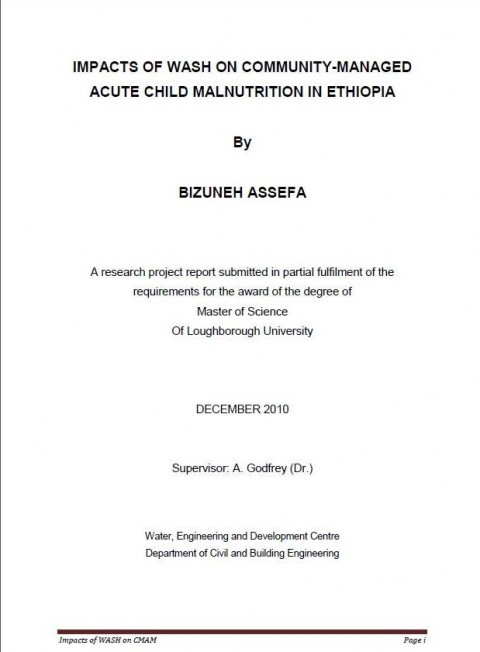
Published in: 2010
Publisher:
MSc thesis, Loughborough University, UK
Author:
Assefa, B.
Uploaded by:
SuSanA secretariat
Partner profile:
common upload
5835 Views
82 Downloads
Location of library entry
Content - Summary
Child malnutrition in Ethiopia claims children death counted in hundred-thousands every year. Despite considerable efforts are exerted by the national and regional state governments; it is now a serious concern of the country and international humanitarian aid agencies. Many humanitarian aid agencies links child malnutrition from nutrient rich food deficit alone and intervening more in curing than prevention. However the study recognises child malnutrition as a complex and multidimensional issues; but mainly deep rooted in inadequate and inefficient public health issues at household level. Adequate and wholesome water supply, proper sanitation and hygiene promotion and socio-economic improvement at poor household level contribute to the reduction of child malnutrition in Ethiopia. The study identifies micro level determinants of household wealth status, family sizes, birth spacing, safe and accessible water, have and use of latrine, washing hands with soap as key determinants of acute child malnutrition in Ethiopia.
Bibliographic information
Assefa, B. (2010). Impacts of WASH on community-managed acute child malnutrition in Ethiopia. MSc thesis, Loughborough University, UK
Filter tags
Case studies in other formats English Sub-Saharan Africa WASH and nutrition (WG12)















